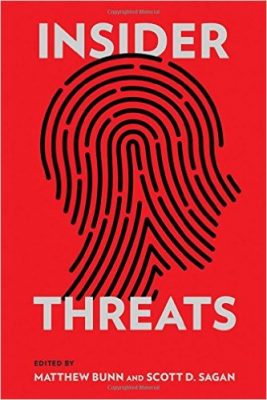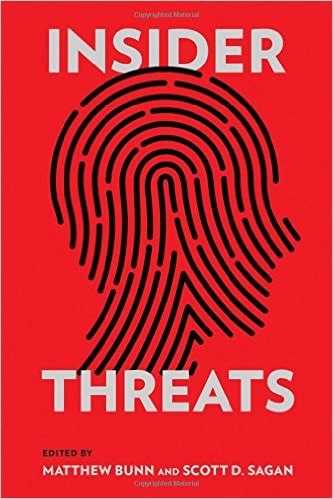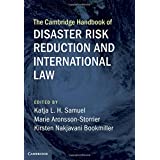 Editors: Matthew Bunn and Scott D. Sagan
Editors: Matthew Bunn and Scott D. Sagan
Publisher: Cornell University Press – 181 pages
Book Review by: Paiso Jamakar
The editors begin this book by stating that while insider events are few in number relative to all dangerous (and sometimes) deadly and financially damaging events perpetrated by outsiders, even one is too many if a single life is taken. There have been a number of events in which lives were taken by insiders, as found in this unique book on insider threats. We cite three here:
- The murder of India’s Prime Minister Indra Gandhi by her own bodyguards Beant Singh and Satwant Singh in the aftermath of the Indian Army’s June 1984 assault on the Golden Temple in Amritsar.
- The shooting and killing of three fellow soldiers and himself in April 2014 by 34-year-old Army Specialist Ivan Lopez at the Fort Hood military base in Killeen, Texas, for being denied a ten-day leave.
- Insider sabotage of the turbine of the Doel-4 nuclear power plant in August 2014 in Belgium that caused more than $150 million in damage.
The two editors named above led a team of nine researchers including themselves and examined for this important book, the causes and deadly consequences of the lack of tight security, close communication, control, coordination, and other missing elements in various events and locations around the world, including in Africa, Asia, Europe, and North America.
The results of their research, analysis, interpretation, and comments are laid out in the six chapters of this insightful book that we list below to provide you an overview of its contents:
Introduction: Inside the Insider Threat
- Insiders and Outsiders: A Survey of Terrorist Threats to Nuclear Facilities
- The Fort Hood Terrorist Attack: An Organizational Postmortem of Army and FBI Deficiencies
- Lessons from the Anthrax Letters
- Green-on-Blue Violence: A First Look at Lessons from the Insider Threat in Afghanistan
- Preventing Insider Theft: Lessons from the Casino and Pharmaceutical Industries
- A Worst Practices Guide to Insider Threats
The authors and the editors write: “…the serious challenges posed by insider threats should not be a surprise to any organization’s leader or security manager. As the chapters of this book make clear, however, organizations find it exceedingly difficult to understand insider threats and guard against them.”
Why do these leaders and managers find it hard to comprehend the seriousness of the situations, and the urgent need to share information among one another in order to ensure security?
In chapter 6 – A World Practices Guide to Insider Threats authored by Matthew Bunn and Scott D. Sagan, they respond to this question by writing: “…part of the answer is that there are deep organizational and cognitive biases that lead managers to downplay the threats that insiders pose to their own facilities and operations. For the sake of morale within the organization, they want to stress the loyalty, team spirit, and the trustworthiness of their employees.”
The danger here is that people tend to think that what they said is true. As Bunn and Sagan point out: “Cognitive dissonance, affect bias, and the illusion of control often lead managers to believe the stories they repeat.” However, safety and security are of greater importance – than the appearance of everything being under control – in saving lives.
We live in a dangerous world today, under constant threat of attacks. It is imperative that we be alert always. This book is not only timely, but it is a very well-researched and well-laid-out guide to preventing insider attacks. We commend the seven people named below.
Editors:
Matthew Bunn is Professor of practice and co-principal investigator of the Project on Managing the Atom at the Belfer Center for Science and International Affairs at Harvard University.
Scott D. Sagan is the Caroline S. G. Munro Professor of Political Science and a senior fellow at the International Center for Security and Cooperation at the Freeman Spogli Institute for International Studies at Stanford University.
Contributors:
Andreas Hoelstad Daehli is an Oslo-based independent researcher.
Kathryn M. Glynn is a consultant at IBM Global Business Services.
Thomas Hegghammer is the director of terrorism research at the Norwegian Defense Research Establishment (FFI).
Austin Long is an assistant professor at the School of International and Public Affairs and a member of the Arnold A. Salzman Institute of War and Peace Studies at Columbia University.
Ronald Shouten is the Director of the Law and Psychiatry Service of Massachusetts General Hospital and associate professor of psychiatry at Harvard Medical School.
Jessica Stern is a fellow at the FXB Center for Health and Human Rights at the Harvard Medical School of Public Health and a lecturer in government at Harvard University.
Amy B. Zegart is the co-director of the Center for International Security and Cooperation; a senior fellow, by courtesy, at the Freeman Spogli Institute for International Studies; Davies Family Senior Fellow at the Hoover Institution; and professor, by courtesy, of political science at Stanford University.







